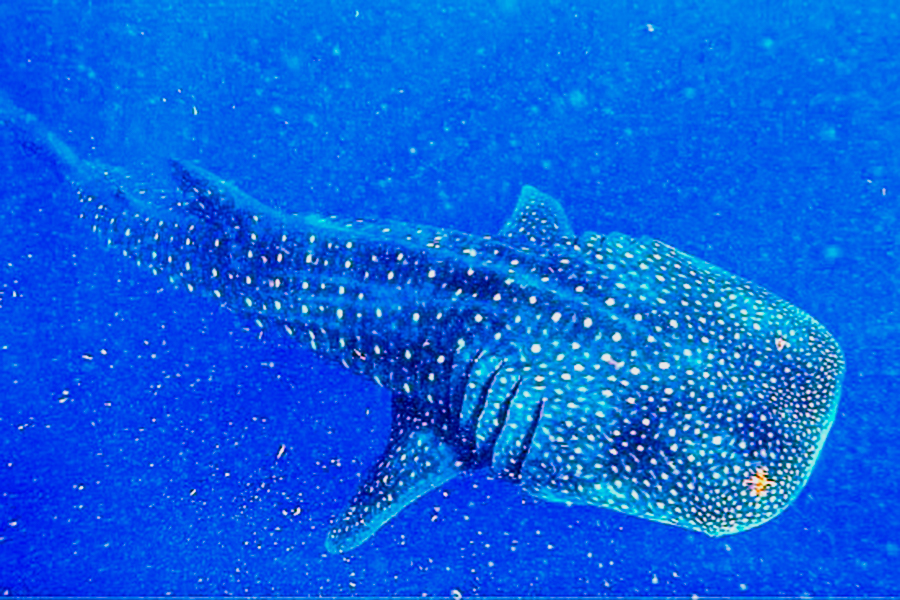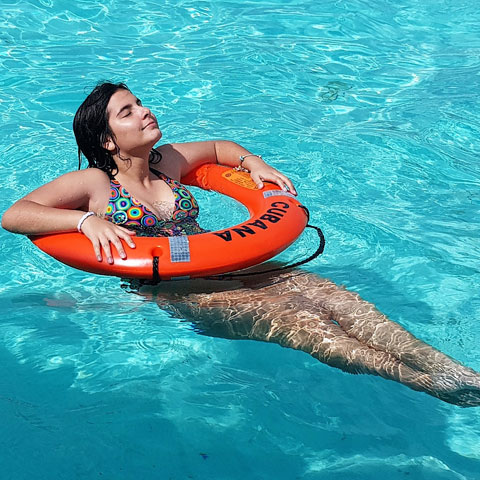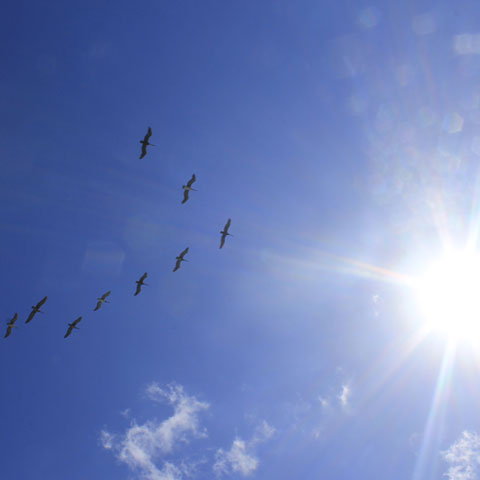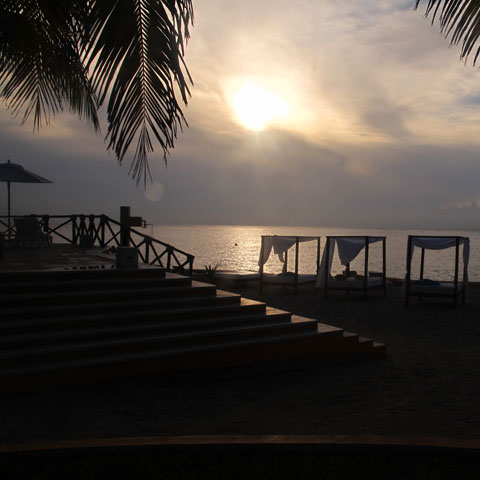The whale shark is known to be the largest fish and shark in the world. These mellow Goliath's roam around the globe in tropical waters like Coastal East Africa, Gulf of California, Coral Triangle, and our very own Mesoamerican Reef.
They generally travel alone with extremely slow speed, as they migrate thousands of miles in search of different feeding grounds. A top speed for these colossal fish is around 3 miles an hour, making them the slowest shark on the planet. The species is endangered and they’re under threat with about 200,000 to 240,000 whale sharks left in all the waters across the world. This number is small as there has been a sharp decline in their community in the last 75 years. Our seas have lost over half of the Whale shark population. Their ocean home is in a lot of danger, climate change is warming the waters, this affects prey and shark population as well as both habitats. Sometimes sharks are caught accidentally in fishing equipment, however in Asia their fins are a delicacy and are deliberately caught as well.
Eating Is Laborious Work
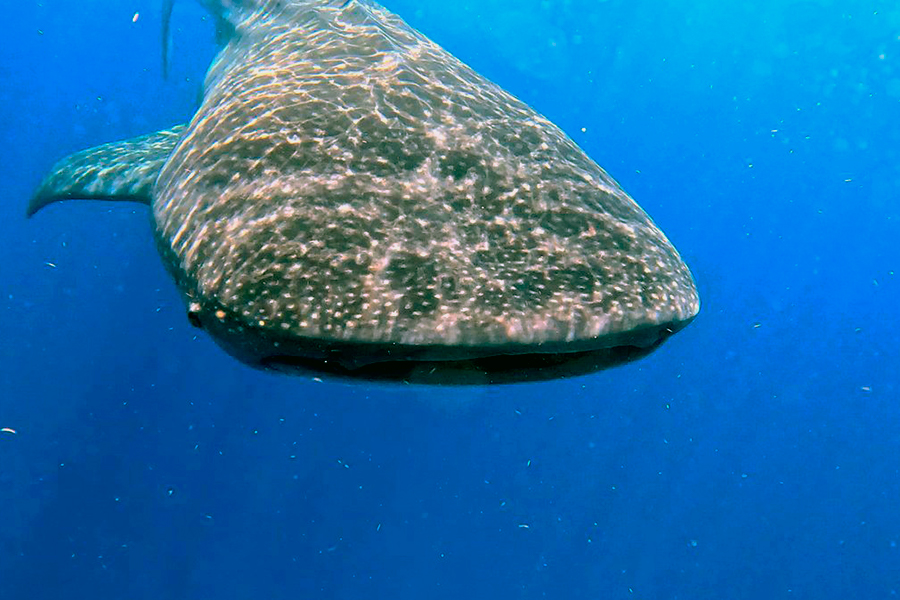
These gentle giants cannot bite or chew, they are filter feeders. They process approximately 1585 gallons of water an hour by using their gills. They have a mouth that can open four feet wide, but you will find it hard to see the 300 teeth because they are so tiny. They use their gill rakers, as a suction filter, they can eat small shrimp, fish, and plankton. This feeding style only occurs in only two other sharks, the Megamouth shark and the Basking shark. Filter feeders remove plankton, bacteria, and toxins from water by flowing it through the gills, this even increasesour underwater ecosystem health.
Unfortunately, plastic pollution has become a problem as it is easily ingested by filter feeders. The amount of whale sharks indicates how much plankton there is and the overall health of our oceans.
Migration To Isla Mujeres
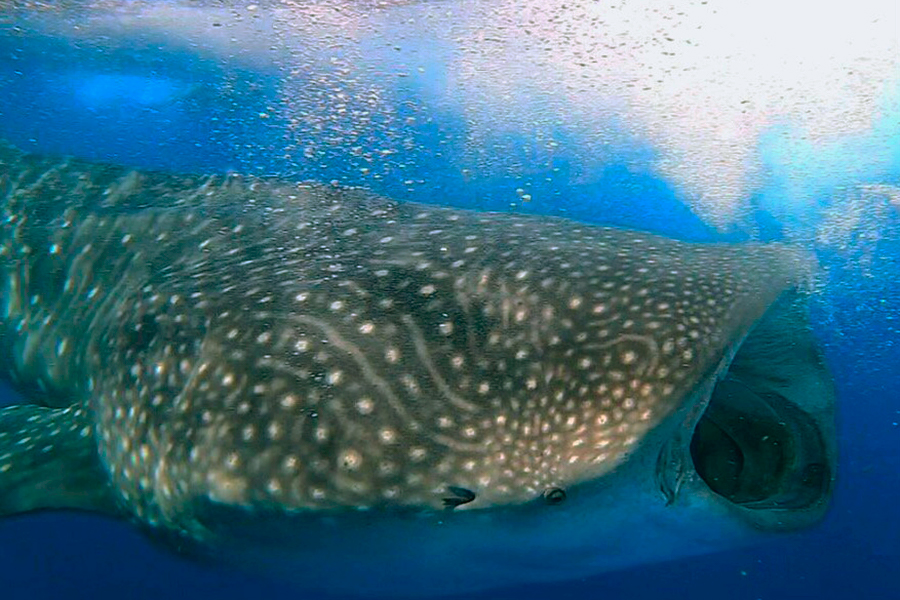
From May to September these incredible sea creatures migrate to the Mesoamerican Reef. Even though they generally like their own company, large numbers of whale sharks gather in feeding grounds that are abundant with plankton food, making them a prime tourist attraction. Off the coast of Isla Mujeres, you can find one of their favorite places to swim and play. It’s possible to submerge yourself in the crystal-clear Caribbean Sea, while exploring the underwater ecosystem. It’s hard not to be amazed and captivated by swimming alongside these large tranquil mammoths.
The name "whale shark" refers to the fish's size. The largest confirmed Rhincodon typus had a length of 18.8 m (61.7 ft), that’s bigger than a bus by 20 ft. The whale shark holds many records for size in the animal kingdom, you can imagine how insignificant you feel snorkeling with them around Isla Mujeres. This island tends to have more whale sharks than any other area in the Mexican Caribbean, averaging five to 50 sightings on each excursion.
On The Bucket List
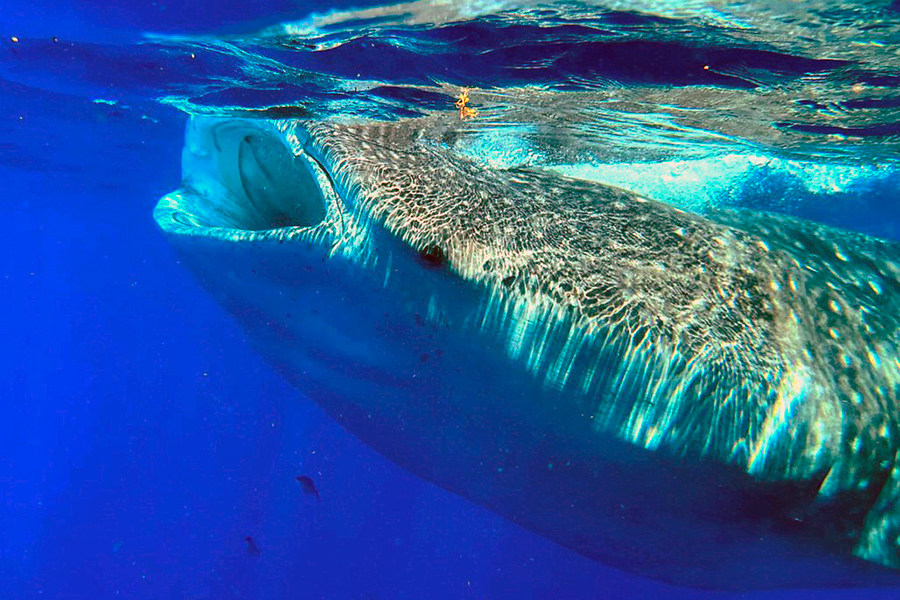
Go on an ocean safari in search of the astonishing majestic Whale sharks. Book an expedition that’s at least 6 hours, but it’s best to take an 8-hour tour. This will ensure if there are other boats at a feeding ground, you will be able to go further out to another spot. You can have the chance to take a breathtaking dive next to them without the crowds.
Tour providers of the Mexican Caribbean are embracing new government regulations to protect the whale shark:
- From May 2023 it was restricted to two dives per person instead of the average six.
- Under the Mexican Caribbean’s ecotourism standards, this year the Whale Shark Reserve is for the first time managed under the region’s Natural Protected Areas (ANP). This is a blessing for the whale sharks and Eco tourists alike. It will give you a more up close and personal experience with these peaceful Goliath's of the fish world.
Strict safety and sustainability guidelines include:
- Buddy-system swimming (max. two people in the water at one time)
- No touching of whale sharks
- A minimum six-feet distance policy
- No flash photography
- No more than 10 people allowed per boat.
Upon arrival at the feeding grounds, the guide will give instructions on how the operation will be for snorkeling with the whale sharks. You will be accompanied by a certified guide in the ocean at all times. They can offer a professional underwater photo shoot to capture your swim with these impressive sea creatures.
Isla Mujeres has the most breathtaking marine fauna, so they include a reef expedition. Voyaging to a beautiful coral reef, you can snorkel in the ‘rainforests of the sea’, marveling at the hundreds of species living together. At the end of the day, you will arrive at Playa Norte on Isla Mujeres. This is where your crew will create a delicious banquet of exquisite fresh Ceviche and authentic Guacamole. Relax, swim, and enjoy this secluded tropical paradise. Ask your crew for ice cold beers or refreshments to satisfy your thirst. The journey back to the mainland sees the slanting rays of the setting sun giving you a warm orange and pink tinge to the sky.
After reading about whale sharks, would you like to see them up close? If you would, click here to book a tour starting from Cozumel, starting from Playa del Carmen, and starting form Cancún.
